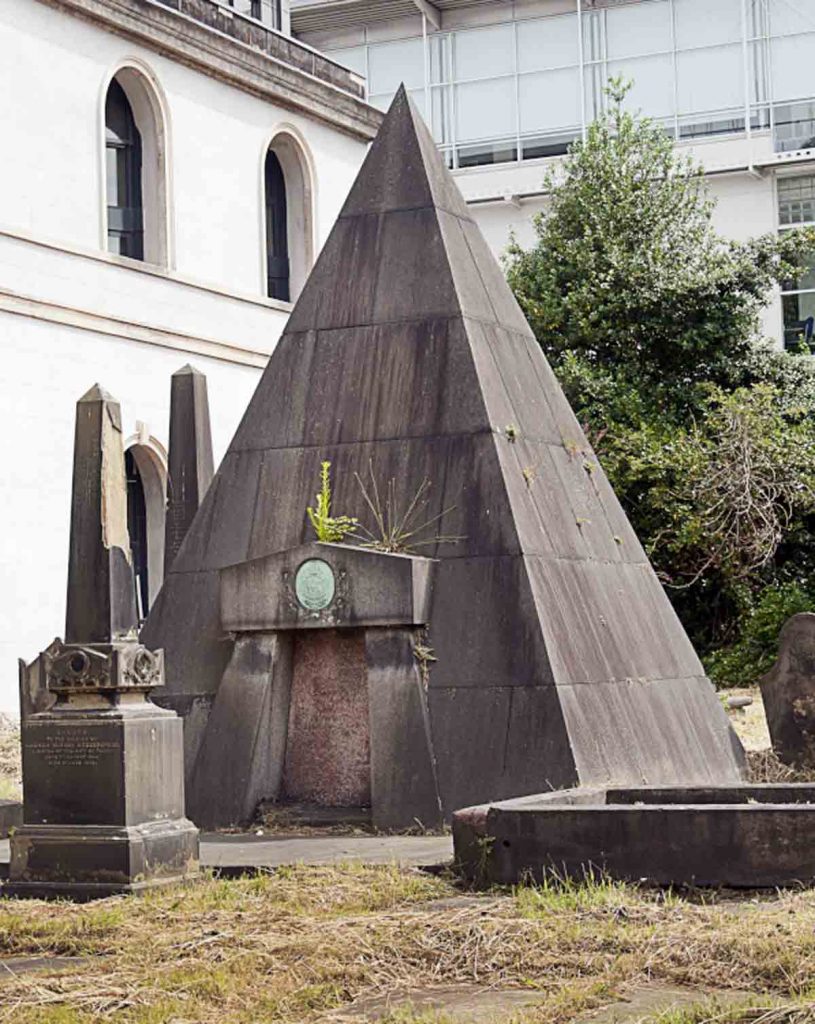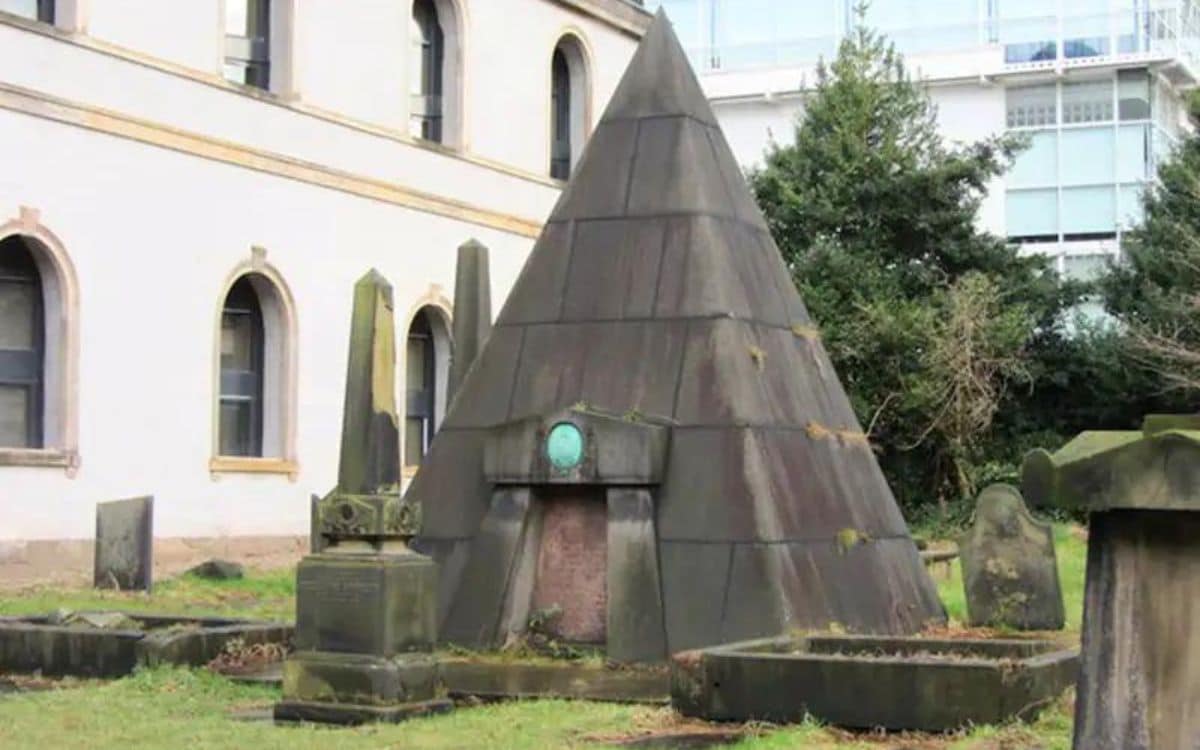ELLIOT DAVIES uncovers the truth about the 15 foot Liverpool Pyramid – the tomb of William McKenzie!
One of my favourite things about Britain is that you’re never very far from the strange, the beautiful and the downright terrifying. Wherever you go, just beneath the surface you’ll find swarms of myth, legend and folklore milling and teaming like earwigs beneath a slab of stone.
Sometimes, though, the weird and wonderful isn’t so deep rooted and hidden. Sometimes, it’s right there, staring you in the face, daring you to take a closer look.
Case in point: How many people each day must wonder just what the hell a 15ft pyramid’s doing in the middle of a graveyard in Liverpool?
The story behind the Liverpool Pyramid
St. Andrew’s Church on Rodney Street was built to serve Liverpool’s Scottish Presbyterian community. It’s currently in a derelict state and, as such, is not open to the public. Its graveyard, though, is clearly visible from the street.
Sticking out amongst the graves like something that really shouldn’t be there is the pyramid.
Dating from 1868, the Liverpool Pyramid is the grave of one William McKenzie.
Who was William McKenzie?
Born in 1794, McKenzie was a railway engineer who died a rich man in 1851, leaving an estate worth £341,841 to his younger brother.
Legend has it that he owed his success not just to a life spent improving the world’s infrastructure, but also to a fruitful gambling habit. In this pursuit he was seemingly so lucky that some believed he’d sold his soul to the devil in exchange for a winning hand in a game of cards.
A staunch atheist, his reasoning went that he had nothing to lose in gambling his soul, as you cannot possibly lose that in which you do not believe.
The popular belief is that within the pyramid McKenzie’s skeleton can be found sat in an upright position. He’s holding a winning hand of cards to cheat the devil when he comes to claim his soul.

The devil’s not that stupid, though. Despite McKenzie’s best and freakiest efforts, his soul may have been claimed by Satan anyway.
How else would you explain the stories concerning the sightings of his tormented spirit?
Such a sighting reportedly took place one murky Sunday night in the autumn of 1871. Walking down Liverpool’s Maryland Street, respected doctor Lionel Harland heard footsteps approaching. Emerging from the gloom ahead of him he saw the foreboding figure of a tall man in a top hat and a flowing cape.
Though all men in the 19th century were foreboding figures in top hats and flowing capes, this particular gent gave Dr. Harland the willies. He recognised him as none other than McKenzie; a man he’d known years ago who had died twenty years previously.
Though the face of a dead man walking might be horrifying enough, McKenzie’s face glowed as if lit by fiery embers, whilst his eyes were black and lifeless like spent coal. It literally scared the good doctor to death. He’d suffer a fatal heart attack later that night.
There are also stories of an unsavoury body snatching racket being linked to McKenzie’s home address, but the links are so tenuous that I believe the allegations to be nothing more a bit of posthumous demonisation.
If you’re going to inter yourself in a 15 foot black pyramid of death right in the middle of a respectable, well-to-do-part of town, then it’s inevitable that your legacy will be awash with rumours and slander.
Whether you’re travelling on foot or by car, the Liverpool Pyramid is clearly visible from Rodney Street.
I wouldn’t recommend seeking out McKenzie’s ghost, though. Your efforts may prove fatal.
What do you think of the Liverpool Pyramid ? Tell us in the comments section below!



Wonderfully weird and creepy.
It's just around the corner from the JMU union as well.
Also: McKenzie was implicated in a body snatching ring that operated a few streets away from the Pyramid.
Alas, it’s not true. The pyramid monument you see was actually erected seventeen years after his death in 1868 by his brother Edward.